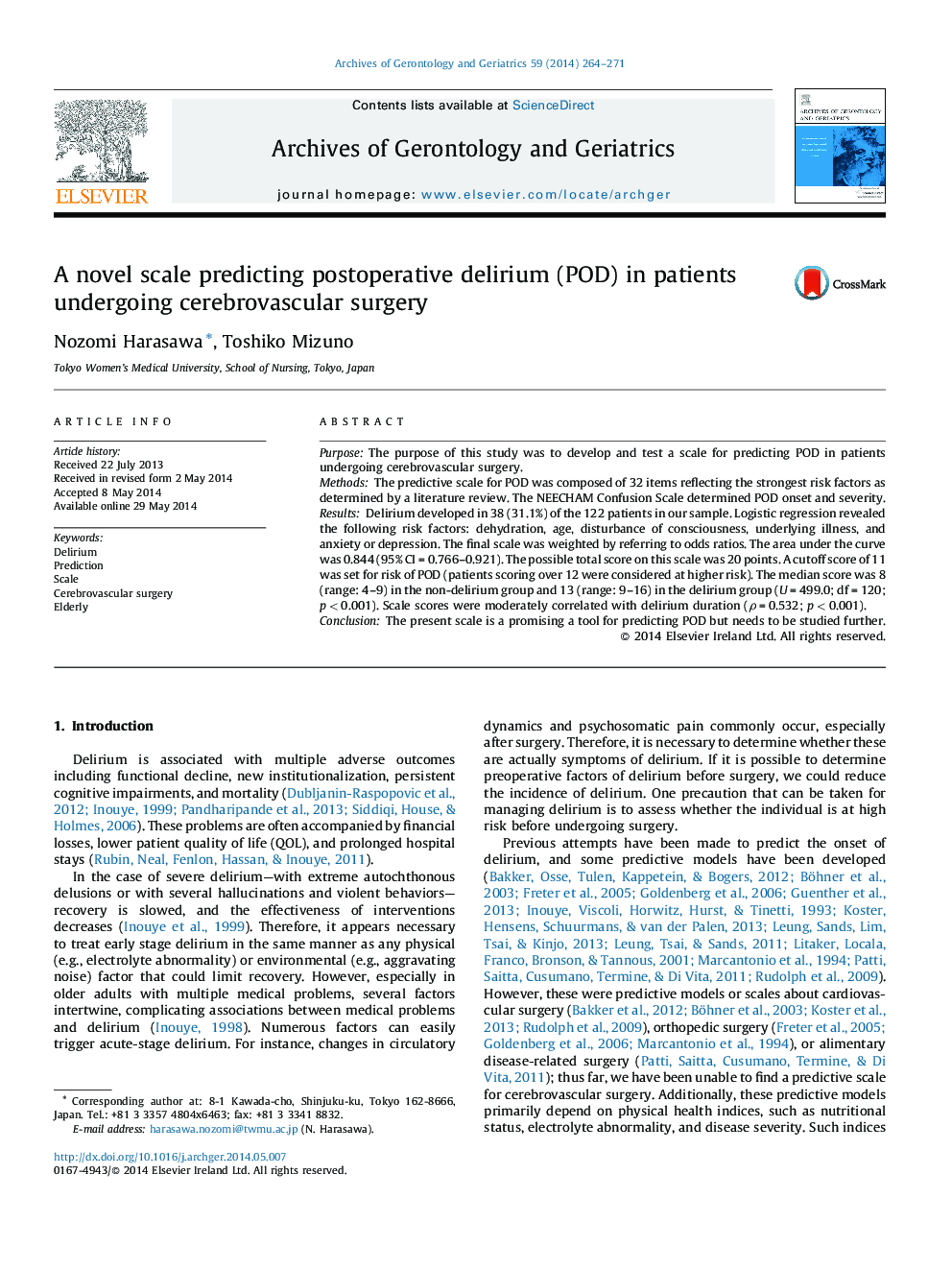| Article ID | Journal | Published Year | Pages | File Type |
|---|---|---|---|---|
| 1902928 | Archives of Gerontology and Geriatrics | 2014 | 8 Pages |
•The present scale is a promising a tool for predicting POD.•This scale is first measure useful in surgical operations of cerebrovascular disease.•The present scale demonstrated high likelihood of predicting delirium severity.
PurposeThe purpose of this study was to develop and test a scale for predicting POD in patients undergoing cerebrovascular surgery.MethodsThe predictive scale for POD was composed of 32 items reflecting the strongest risk factors as determined by a literature review. The NEECHAM Confusion Scale determined POD onset and severity.ResultsDelirium developed in 38 (31.1%) of the 122 patients in our sample. Logistic regression revealed the following risk factors: dehydration, age, disturbance of consciousness, underlying illness, and anxiety or depression. The final scale was weighted by referring to odds ratios. The area under the curve was 0.844 (95% CI = 0.766–0.921). The possible total score on this scale was 20 points. A cutoff score of 11 was set for risk of POD (patients scoring over 12 were considered at higher risk). The median score was 8 (range: 4–9) in the non-delirium group and 13 (range: 9–16) in the delirium group (U = 499.0; df = 120; p < 0.001). Scale scores were moderately correlated with delirium duration (ρ = 0.532; p < 0.001).ConclusionThe present scale is a promising a tool for predicting POD but needs to be studied further.
